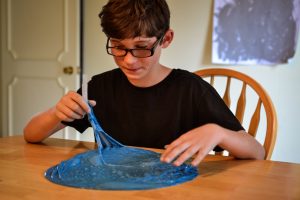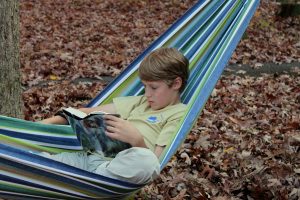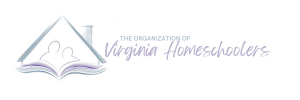Styles & Approaches

In essence, homeschooling happens when families take on the primary responsibility for their children’s educations, using their existing roles to guide the progress of their children. Homeschooling may look different in different families. Some parents might prefer a structured, “school-at-home” approach, while others may prefer a lifestyle in which learning is integrated seamlessly with daily activities; many families will choose something in between. In almost all homeschooling families, the approach will change from one year—or even one day—to another.
Family-centered education offers great flexibility and variety. Learning happens in kitchens, spare rooms, cars, classrooms, art and dance studios, science labs, college campuses, campers, libraries, theatres, forests, airplanes, and in conversing with family and friends. Many parents use supplemental activities and supplies, such as sending their children to outside lessons, making use of the library, using pre-packaged curricula, going on field trips and taking advantage of less-traveled times of the year to explore the world.
Explore a brief description and a sampling of resources for some popular methods of homeschooling; or mix and match to find a way that works best for you and your family.
Charlotte Mason was a 19th Century educator and teacher. She developed a literature-based education, founded on reading real (“living”) books, short lessons, narration, copywork and dictation, and nature study. She encouraged parents and educators to avoid “twaddle” (graded readers, etc.) and textbooks, and instead use good literature as the basis for the school curriculum.
Website: Charlotte Mason Research Company
Charlotte Mason Books on Amazon:
Many families who want to offer a liberal arts education to their children, including lessons in Greek and Latin, as well as formal instruction in logic, opt for the Classical Education approach. This method is based on the Trivium, an educational philosophy used in ancient Greece and Rome. Education is divided into three stages: Grammar, Dialectic, and Rhetoric. Grammar (grades 1-6) is at the heart of the Grammar stage, as well as memorization of facts, figures, and basic skills. The Dialectic stage (grades 7-9) deal with logic, or understanding the why and how behind all the facts they learned in the grammar stage. The final stage, Rhetoric (grades 10-12+) focuses on reasoning and applied logic, explaining and using this learned knowledge to create new ideas and also applying them to real and hypothetical life situations.
Websites Related to Classical Education:
Classical Books on Amazon:
Dr. Raymond Moore, and his wife Dorothy, pioneers of the modern homeschooling movement, created this approach. The Moore Formula focuses on a balance of Study, Work, and Service. Formal academics are not begun until the ages of 8-10, and once formal study is begun, the child’s interests are the focus of unit studies created by the parent to teach basic skills as well as content subjects. Informal learning before the age of 8 happens as the child works and plays within the family.
Website: The Moore Foundation
Books on Amazon:
Eclectic, by definition, means combining different philosophies or styles, and that is what eclectic homeschoolers do. They select whichever materials and methods best fit their children, and frequently adjust to suit the needs of the family and children. Not tied in to only one method or style, they can create a totally unique homeschooling atmosphere based on their children’s needs, interests, and strengths.
Websites Related to Eclectic Homeschooling:
Eclectic Homeschooling Books on Amazon:
The Unit Study method of homeschooling, sometimes called thematic units or integrated studies, involves creating units of study which link multiple subjects around a common topic or theme, rather than teaching the subjects as separate courses. This method lends itself very well to hands-on learning, teaching several different ages at once, and creating a natural atmosphere for exploration and learning. Many packaged unit studies are available, and some parents create their own units based upon their children’s interests.
Websites Related to Unit Studies:
Unit Study Books on Amazon:
Unschooling is not easily defined. When John Holt, the “father” of the modern homeschooling movement, coined the phrase, he simply defined it as any learning that took place outside of conventional schooling. Since then, it has evolved to encompass many ways of natural learning; trusting children will learn what they need to know as they find a need to know it. Traditional curriculum is usually shunned in favor of following a child’s interests. Parents are viewed more as facilitators and mentors rather than teachers, although teaching can be a part of the process, but it is at the initiation of the child rather than the adult.
Websites Related to Unschooling:
Unschooling Books on Amazon:
Waldorf Education is based upon the educational philosophy of Rudolf Steiner, who developed a philosophy called Anthroposophy. A Waldorf curriculum is based on the developmental stages of the child’s awakening consciousness, with a heavy emphasis on the role of the teacher to nurture and guide the children. Steiner believed all children pass through the same three developmental stages at about the same time, with few exceptions. The first stage begins at birth and continues losing of the baby teeth, and education at this stage focuses on fairy tales and archetypal stories, carefully chosen to teach moral principles and are used to introduce alphabet and number concepts. The second stage begins at the eruption of permanent teeth and continues through the onset of puberty, and the focus is on the child’s emotional nature. The third stage, adolescence, is when reasoning predominates, and the child develops his independence and own personal way of interacting with the world around him.
Websites Related to the Waldorf Method:
Waldorf Books on Amazon:

Links to Amazon.com included on this page are affiliate links with the Amazon Associates program for which The Organization of Virginia Homeschoolers receives a referral fee.
This information is provided as a courtesy of The Organization of Virginia Homeschoolers. It is not intended as legal advice. For legal advice, contact a licensed attorney.
VaHomeschoolers is a non-profit public charity with 501(c)(3) status; your donation is tax-deductible to the extent provided by law.






















